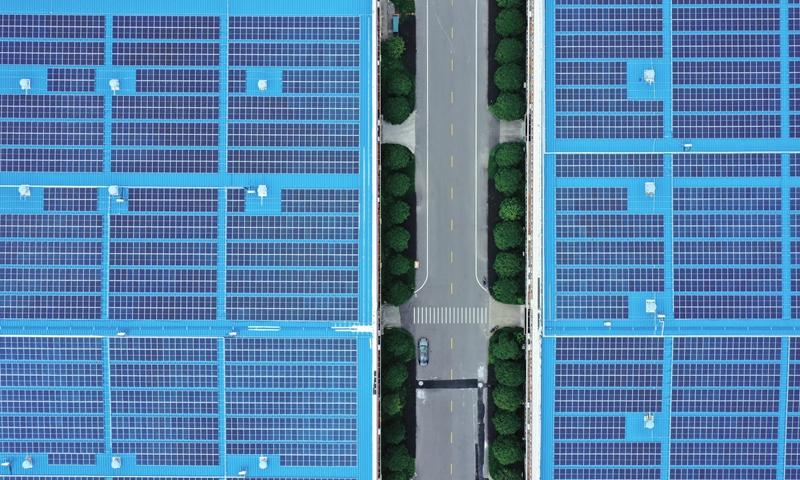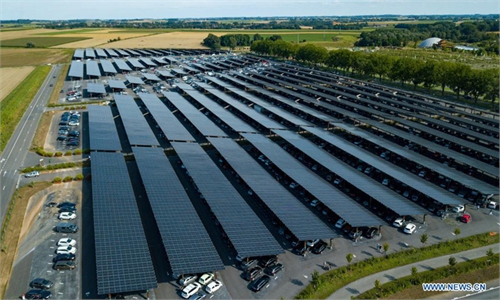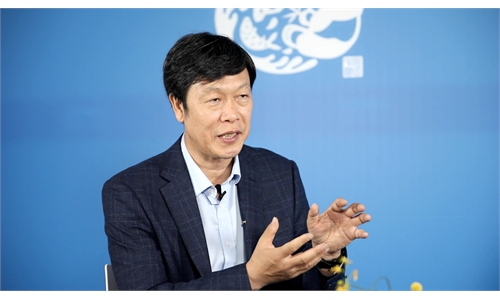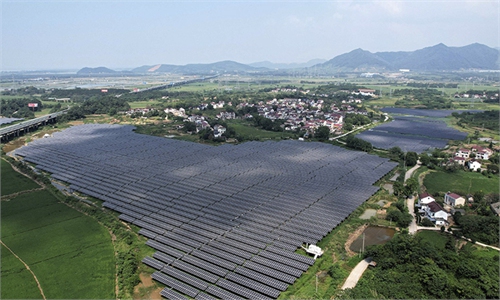
Solar panels on the roof of a company in Yueqing, East China's Zhejiang Province are seen in an aerial photo on Sunday. The city, which is pushing for green-driven economic growth, is home to 6,520 independent distributed solar photovoltaic projects, with annual power generation hitting nearly 100 million kilowatt hours. Photo: cnsphoto
A number of areas in China have held off on the projects for rooftop photovoltaic (PV) power generation, as the application projects have exceeded grid capacity creating potential safety hazards, after the National Energy Administration (NEA) in June released a statement aiming to promote the rooftop PV power projects to achieve the country's double targets of carbon peak and carbon neutrality.
On November 1, Dengzhou, a city in Central China's Henan Province, announced that the city will suspend part of rooftop PV power projects due to safety hazards in its facilities and high maintenance costs.
Dengzhou is not the only place to suspend its rooftop PV power projects. On November 3, Changde, also in Hunan Province, released a statement saying that the city will halt the filing of new rooftop PV power generation projects, as applications have exceeded grid capacity
Earlier in July, Shaoguan in South China's Guangdong has suspended the filing and construction of the rooftop PV project for commercial use. "That all companies rush to apply the PV project will have a large impact on the power grid," an employee from Shaoguan was quoted as saying in a report published by The Paper.
According to the employee, the city is mapping demand for the installation of PV panels and re-planning grid construction as well as replacing transformers.
On June 20, the NEA released a statement saying that the proportion of PV power generation that can be installed on the roof of public buildings including schools and hospitals should reach no less than 40 percent, and for industrial and commercial plants, no less than 30 percent.
According to the statement, China enjoys abundant and widely distributed roofing resources, and the construction of rooftop PV projects will contribute to the integration of resources to achieve intensive development and reduce the peak load of electricity, thus promoting the green energy consumption of residents.
Local authorities should determine the construction scale, operation mode, and grid capacity for the PV projects, alongside supporting policies and security measures, experts said.
Global Times



